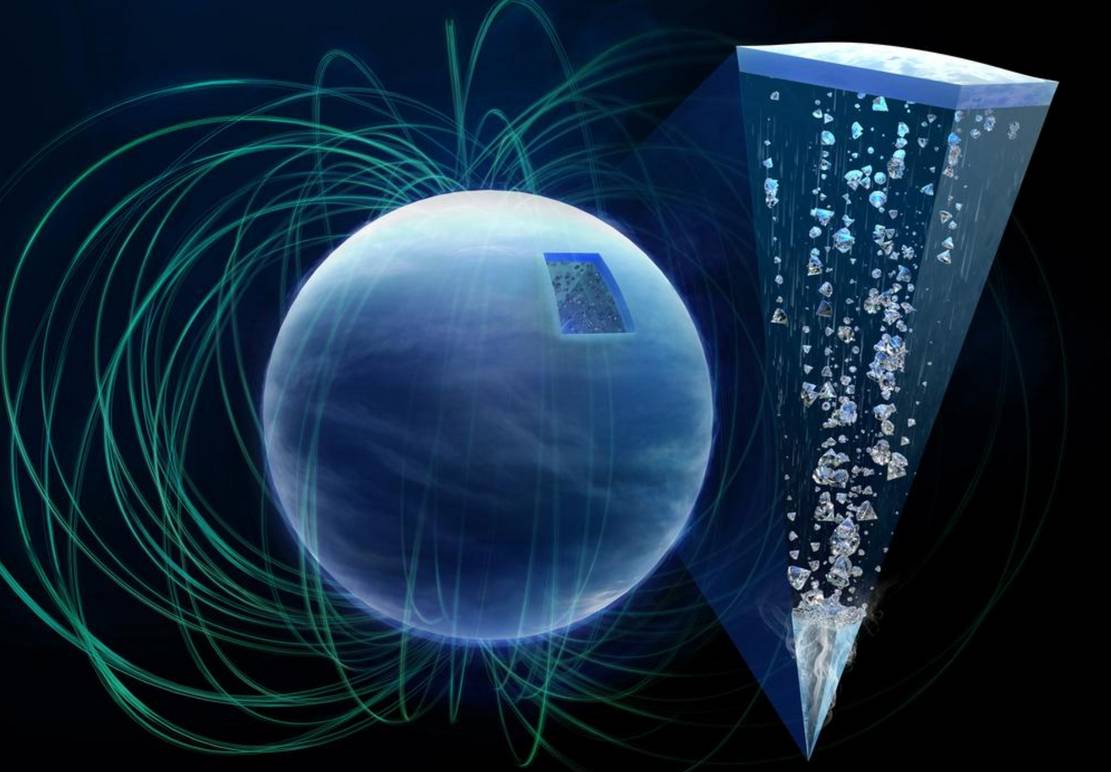The graphic shows the diamond rain inside the planet. Credit European XFEL / Tobias Wüstefeld
Researchers at the European XFEL presented new findings on diamond rain on ice planets.
A team of scientists, led by Mungo Frost at the SLAC research center in California, has uncovered new information about how diamond rain forms on icy planets like Neptune and Uranus.
They conducted experiments at the European XFEL in Schenefeld, using X-ray lasers.
Previous research had suggested that diamonds would develop from carbon compounds deep within the gas giants due to intense pressure. These diamonds would then fall as a rain of precious stones from the upper layers into the planets’ interiors.
 HED Experiment station at European XFEL. Credit European XFEL / Jan Hosan
HED Experiment station at European XFEL. Credit European XFEL / Jan Hosan
However, a recent experiment revealed that diamond formation starts at lower pressures and temperatures than previously believed. This implies that diamond rain forms at shallower depths within gas planets, potentially exerting a greater influence on the creation of their magnetic fields.
The study also suggests that diamond rain could occur on smaller gas planets known as “mini-Neptunes,” which are found as exoplanets beyond our solar system.
As diamond rain descends from the outer to the inner layers of these planets, it carries along gas and ice, generating conductive ice currents. These conductive fluids act like a dynamo, contributing to creating the planets’ magnetic fields.
Frost said:
“The diamond rain probably has an influence on the formation of the complex magnetic fields of Uranus and Neptune.”
source European XFEL/Tobias Wüstefeld



